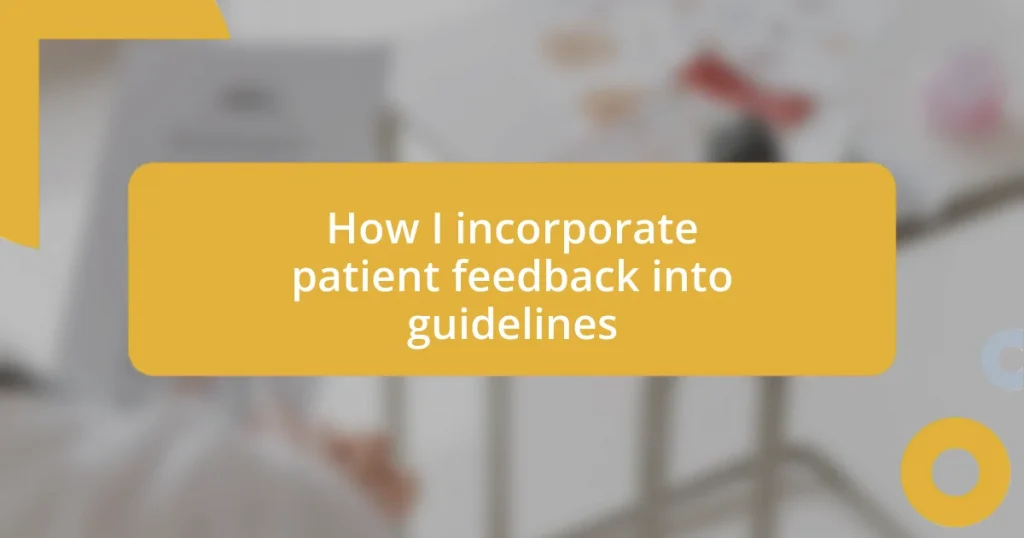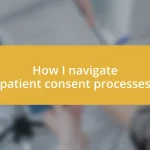Key takeaways:
- Patient feedback is crucial for refining healthcare practices, with individual comments revealing significant areas for improvement.
- Effective collection methods include creating a culture of openness, using follow-up visits, and leveraging technology to enhance the feedback loop.
- Continuous evaluation and adaptation of feedback processes foster trust, improve patient care, and create a more compassionate healthcare environment.
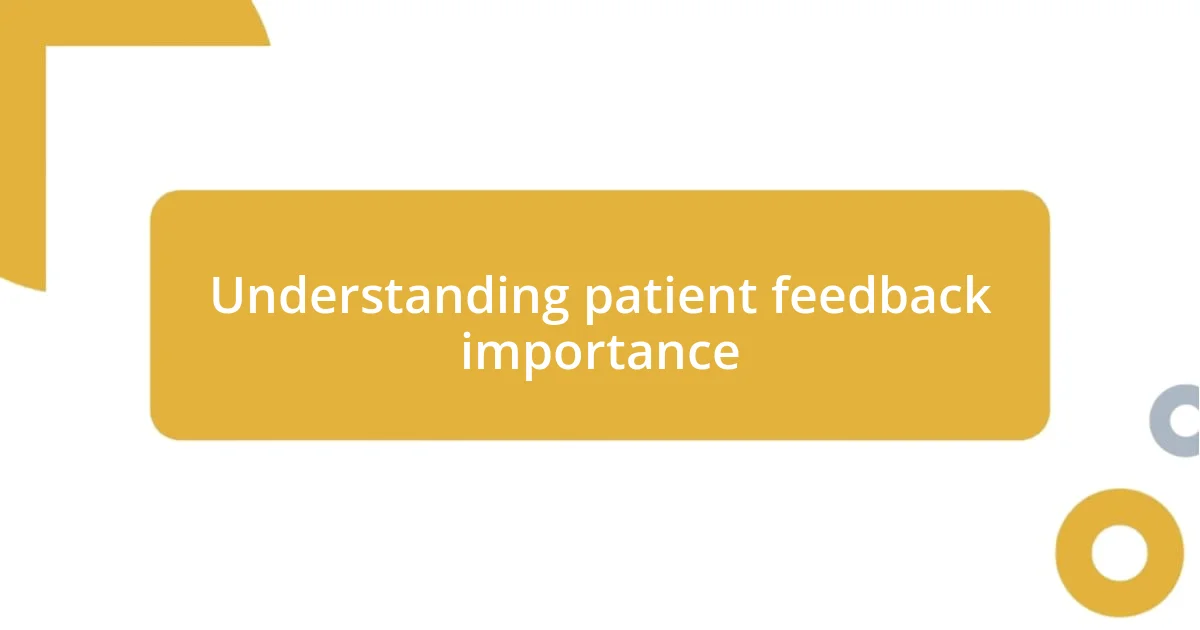
Understanding patient feedback importance
When I think about patient feedback, it strikes me how essential it is for refining healthcare practices. Have you ever considered how a single comment can spark significant changes in treatment protocols? My experience has shown me that what seems like a minor detail to a healthcare professional can represent a major concern for a patient.
I remember a time when a patient shared their struggle with post-surgery pain management. It was a wake-up call for me, revealing that our existing guidelines didn’t address these individual experiences adequately. This feedback not only informed our future approaches but also deepened my empathy towards patients, reminding me that every voice matters in the medical conversation.
Incorporating this feedback into guidelines not only enhances care quality; it fosters trust between patients and providers. Isn’t it vital for patients to feel heard and valued? I believe that when we align our practices with patient experiences, we create a more compassionate and effective healthcare environment.
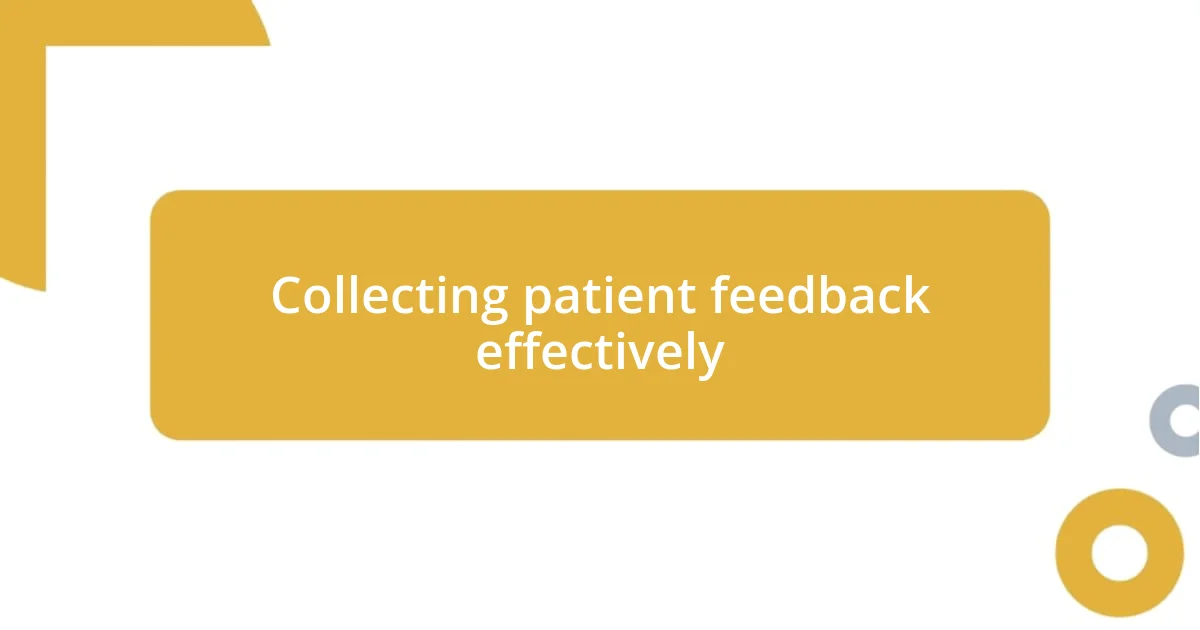
Collecting patient feedback effectively
Collecting patient feedback effectively begins with creating a culture of openness. When patients feel comfortable sharing their thoughts, they’re more likely to provide honest insights. I recall a clinic I worked with that implemented casual feedback forms after appointments. This simple effort made a world of difference; patients began to open up about their experiences, leading to critical adjustments in our approach.
Emphasizing the method of collection is equally crucial. I’ve found that integrating feedback sessions into routine follow-up visits not only eases patients into sharing but also enhances the relationship between them and the care team. It’s interesting how these conversations can unveil underlying issues that might not emerge through traditional surveys. During one such session, a patient revealed discomfort with telehealth options. This feedback prompted a discussion about accessibility that markedly improved our telemedicine services.
Finally, I believe in leveraging technology to streamline the feedback process. Online surveys via email or patient portals have proven effective in reaching those who might hesitate to speak openly. An instance stands out where an anonymous survey led to collective feedback about wait times, enabling us to make necessary changes that improved overall patient satisfaction. Finding the right balance between in-person discussions and digital tools can truly enhance the feedback loop.
| Method | Pros |
|---|---|
| In-Person Feedback Sessions | Encourages open dialogue, builds rapport |
| Anonymous Surveys | Promotes honesty, reaches a wider audience |
| Follow-Up Visits | Integrates feedback seamlessly into care |
| Online Platforms | Convenient, allows for immediate responses |
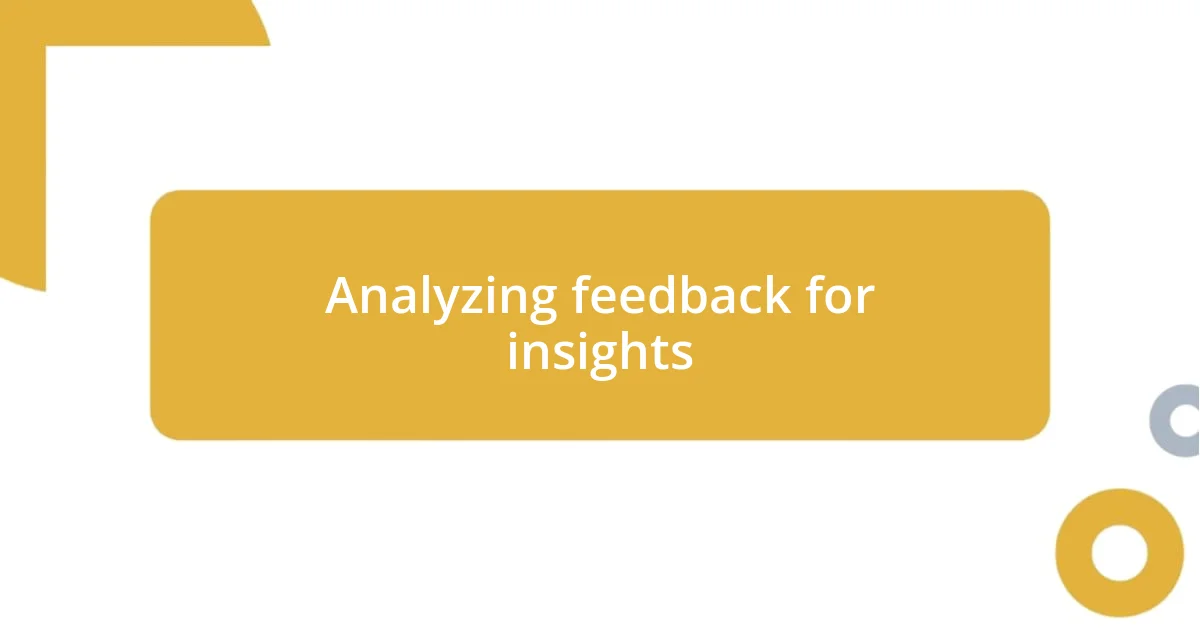
Analyzing feedback for insights
Analyzing patient feedback is a critical step in understanding the real-world implications of our care practices. I often find myself combing through comments and suggestions, looking for patterns that reveal deeper insights. For instance, during a recent review session, I noticed several patients expressing frustration about the clarity of their discharge instructions. This common sentiment illuminated a gap in our communication strategy, prompting me to revise those materials to ensure they are easier to understand.
To make this analysis effective, I focus on specific areas that can lead to actionable insights:
- Thematic Trends: Identifying recurring themes helps prioritize which issues to address first.
- Patient Demographics: Analyzing feedback by demographic groups can highlight unique needs or concerns.
- Contextual Understanding: Considering the situational factors surrounding feedback, such as specific treatments or procedures, adds depth to the analysis.
- Emotional Responses: Pay attention to the language used; often, the emotions conveyed can point to underlying issues that statistics alone might miss.
- Time Frame: Evaluating feedback over time can show whether certain changes have had a positive impact or if further adjustments are needed.
By diving deep into patient feedback, I not only gather insights but also cultivate a genuine understanding of their experiences, allowing me to tailor our guidelines more effectively.
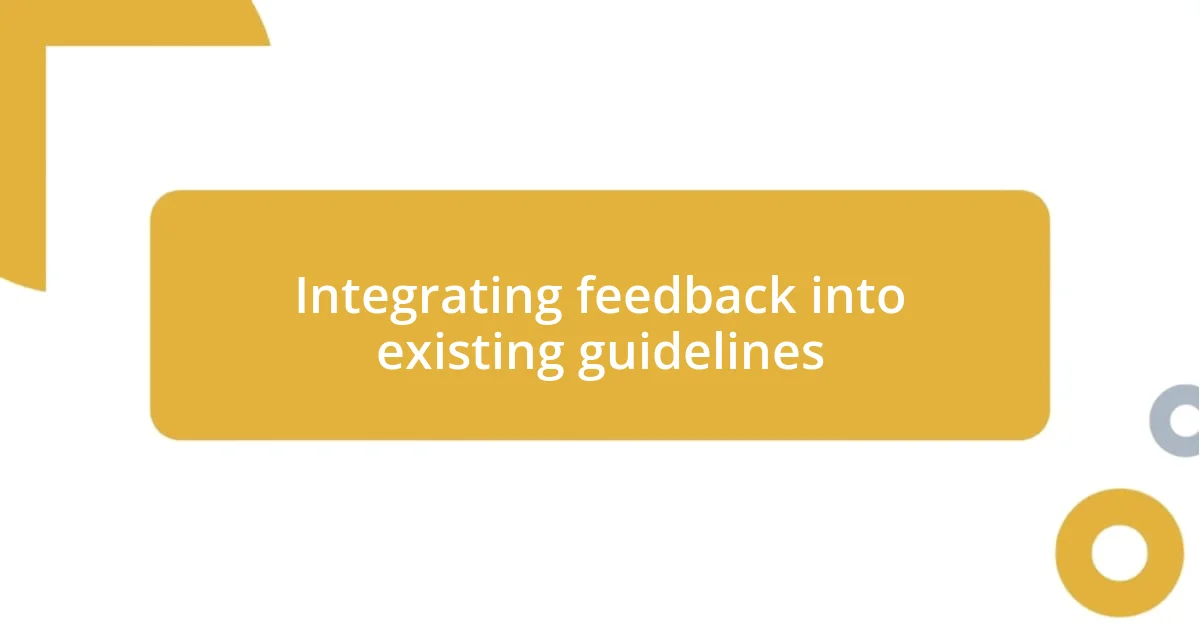
Integrating feedback into existing guidelines
Integrating patient feedback into existing guidelines requires a balanced approach and an open mindset. I’ve experienced firsthand how small changes can create significant improvements. For example, after receiving feedback about our post-operative care instructions being too complex, I proposed we revise those materials. The difference was remarkable; patients expressed greater confidence following their procedures, feeling equipped to manage their recovery.
I often feel that collaboration is key when weaving feedback into established guidelines. In one instance, during a team meeting, I shared comments from patients about delays in follow-up appointments. We brainstormed ideas and decided to allocate resources more efficiently. By allowing all voices to contribute, we not only enhanced patient satisfaction but also fostered a sense of ownership among staff members about the changes we made.
It’s fascinating to see how integrating patient feedback shapes the way we deliver care. I always ask myself: how can we make the patient experience better? An attentive review of our guidelines, infused with real patient insights, can transform traditional practices into more empathetic and responsive approaches. Creating a system where these discussions occur routinely ensures we stay connected to what truly matters in patient care.
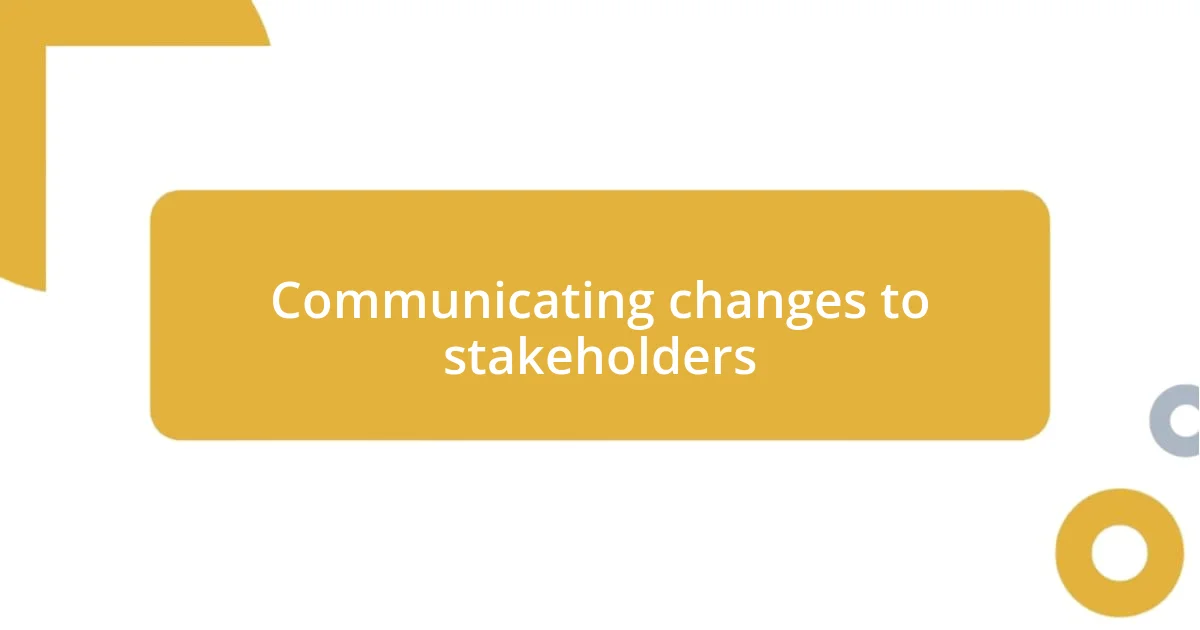
Communicating changes to stakeholders
Effective communication of changes to stakeholders is crucial to ensuring everyone is on the same page. After revising our guidelines based on patient feedback, I found that holding a brief meeting with the entire team can really make a difference. During one of these sessions, I shared stories directly from patients about their experiences, which brought the data to life and ignited a passionate discussion about how we could do better.
I also think it’s important to tailor our communication style to the audience. For instance, when updating administrative staff, I emphasize the impact of these changes on operational efficiency, such as reduced patient anxiety, while with clinical staff, I focus more on patient outcomes. It’s like speaking different languages; when people can see how changes directly affect their roles, they become more invested.
I’ve learned that follow-up is equally important in this process. After implementing changes, I make it a point to ask for further feedback from stakeholders. I often wonder, “Are we truly achieving the goals we set out to accomplish?” This ongoing dialogue not only fosters a culture of continuous improvement but also reassures everyone involved that their opinions matter in shaping our approach to patient care.
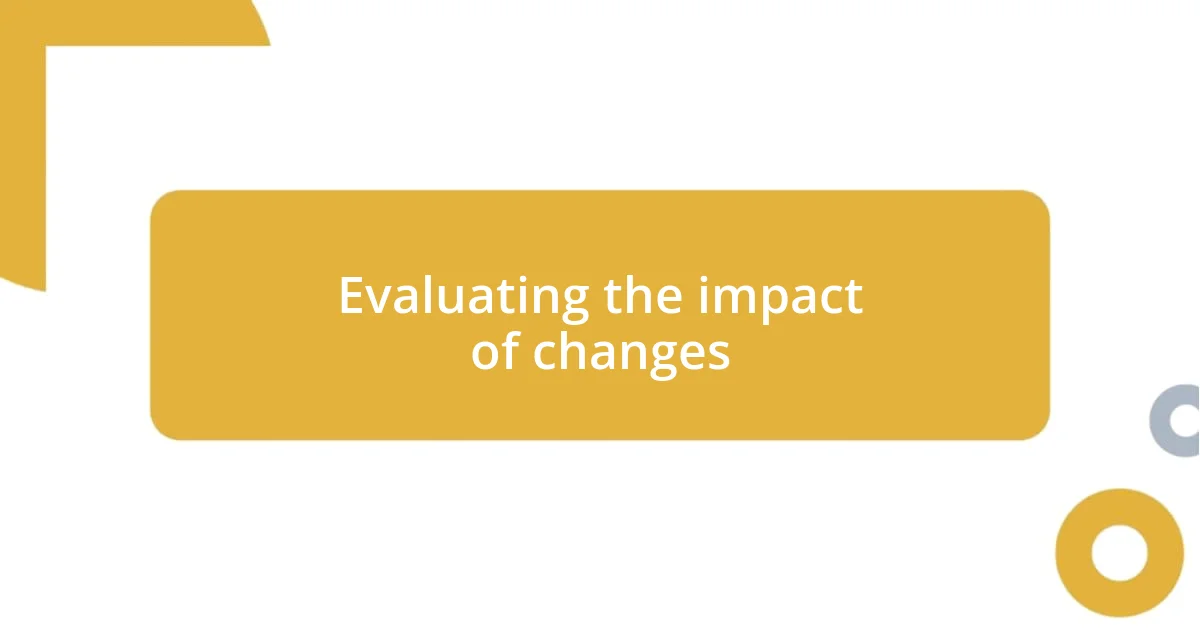
Evaluating the impact of changes
Evaluating the impact of changes is essential for understanding whether our adaptations genuinely resonate with patient needs. I recall a specific instance where we altered our appointment scheduling system based on patient suggestions. After implementing this change, I closely monitored patient satisfaction scores and noticed a significant uptick in positive feedback, which reaffirmed that our modifications were hitting the mark.
To truly gauge the effects of our revisions, I often conduct follow-up surveys and host focus groups. During one such focus group, a patient voiced their appreciation for our clearer communication regarding wait times, which previously caused frustration. This sparked a vibrant discussion that illuminated how meaningful these small adjustments are to the overall experience. It’s not just about numbers; it’s about capturing those invaluable stories that highlight the real-world impact of our efforts.
I also find it crucial to reflect on my own feelings and those of my team throughout this evaluation process. There have been moments when I’ve felt uncertain about whether our changes would be effective. However, witnessing firsthand the relief and gratitude in our patients’ eyes has been a powerful motivator, reminding me that evaluating the impact of changes isn’t simply about metrics—it’s about fostering trust and connection in patient care. How do you measure those emotional shifts that truly indicate success? For me, it’s in those shared smiles and heartfelt thank-you’s that resonate deeper than any statistic ever could.
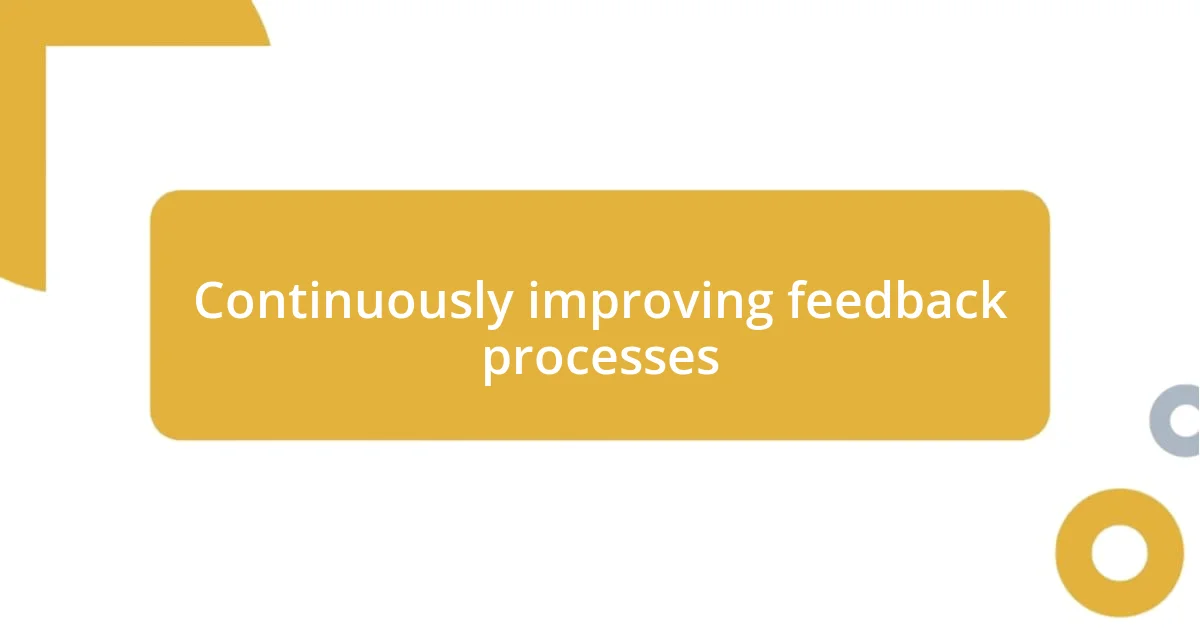
Continuously improving feedback processes
To continuously improve feedback processes, I believe it’s essential to maintain a genuine curiosity about what patients think over time. I remember a time when we introduced a new feedback mechanism, and at first, the response was lukewarm. This made me reflect: How could we make it easier and more inviting for patients to share their thoughts? By simplifying the process and ensuring anonymity, we saw a noticeable increase in responses, which not only provided us with better insights but also empowered patients to feel heard.
In my experience, revisiting feedback tools is just as vital as the feedback itself. After implementing our first round of patient surveys, we held a brainstorming session to evaluate the questions we asked. Some felt too technical or didn’t address the real concerns patients had. I asked myself, “Am I truly capturing the essence of their experiences?” Through open discussions with both staff and patients, we refined the survey, making it more relatable. The new version led to richer, more useful data that stirred up greater enthusiasm in our team.
Additionally, I often incorporate an element of storytelling within feedback discussions. When a patient shared how a small change in our waiting area brightly affected their mood, it resonated deeply with everyone present. It made me think about how these stories could unify us in our mission. I find it puts a human touch on the feedback process, inviting everyone to not just listen to the data but to feel and understand the impact of our work personally. Isn’t it rewarding to realize that small improvements can create such ripples of joy and satisfaction?










